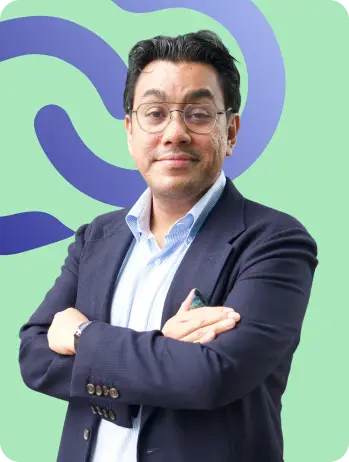This article first appeared in Digital Edge, The Edge Malaysia Weekly on August 26, 2024 – September 1, 2024.
Describing the fight for talent in the game development industry as merely “competitive” would be an understatement. During the Covid-19 pandemic, gaming companies experienced unprecedented growth as demand for entertainment, including video games, surged while people stayed home. However, as the world emerged from the pandemic, these same companies began large-scale layoffs, leading to the closure of studio units worldwide.
Meanwhile, a different story was unfolding in Malaysia. Although the country’s game development sector has been in existence for a couple of decades, it has only recently attracted significant attention from international companies, particularly in the last five years.
Malaysia has long been recognised for its strong educational foundation in computer science and creative arts — fields that have been developed over the past two to three decades. However, there has been a notable shift in recent years, with these skills increasingly being applied to game development.
Interest in game development education has surged, catching the attention of major gaming companies. Global players such as Xsolla, a video game commerce company, and Virtuos, a game development studio, have not only entered the Malaysian market but also established educational programmes to bridge the gap between academic training and industry needs. Even homegrown Lemon Sky Studios has been proactive, piloting its own internal game development workshop, which is set to launch soon.
In recent years, there has also been stronger industry participation in formal game development programmes, says Hasnul Hadi Samsudin, head of PlayStation Studios Malaysia. This has raised the quality of the curriculum.
For example, The One Academy (TOA) has partnered with interactive media and video game academy DigiPen to offer specialised diploma and degree programmes focusing on computer science and game design. Similarly, Asia Pacific University (APU) has adapted its School of Computing and Technology to include game development, reflecting this growing trend.
“APU is one of the premier universities for computer science and engineering. With the addition of game development to its portfolio, it gives opportunities for talent in this space to grow,” Hasnul tells Digital Edge.
“Graduates can benefit from industry advisory, curriculum enhancements and masterclasses. We have also seen the industry step in to establish programmes.”
With the increasing availability of game development programmes, can Malaysia become the regional hub for game development education? Industry players believe we are already on that path. However, while the country boasts quality talent, there is still much work to be done in building a stronger educational system for the industry and developing a comprehensive game development ecosystem to solidify our position.
Lemon Sky Studios chief operating officer and chief creative officer Ken Foong asserts that the current focus should be on building the whole game development ecosystem, especially given the abundance of promising talent.
Countries that are doing well, such as the US, Japan and China, have full ecosystems, meaning that there is support from ideation to development, production and finally, distribution and sales. “Building the ecosystem would see more return on investment and it would help us take the industry to the next level,” says Foong.
Since Malaysia first made its mark on the gaming scene less than a decade ago, the industry’s art capabilities have matured to the point where they meet international standards. Mufizal Mokhtar, general manager of Virtuos Kuala Lumpur, credits local studios such as Lemon Sky Studios, Passion Republic and Streamline Studios for laying a solid foundation for art in the industry. Their success has paved the way for larger international studios to enter the Malaysian market in recent years.
According to Mahadhir Aziz, CEO of Malaysia Digital Economy Corporation (MDEC), the local game development landscape is poised for significant growth and innovation in the coming year. With more studios setting their sights on the country, the demand for local talent is expected to surge.
To sustain this momentum, it is crucial to cultivate an environment that supports and nurtures the talent pool. In fact, there are several strategic partnerships and collaborations in the pipeline aimed at enhancing talent development in this space, says Mahadhir.
“We are in active discussions with leading game engine providers to conduct comprehensive workshops and training sessions. These collaborations aim to provide deeper integration with local universities and institutions of higher learning, ensuring that the curriculum aligns with industry needs.
“We are also exploring the establishment of a ‘Centre of Excellence’ dedicated to game development. This centre will serve as a hub for all these initiatives, facilitating advanced training programmes, fostering industry-academic collaboration and driving innovation.
“By bringing together industry leaders, academic institutions and emerging talent under one roof, we aim to create a sustainable ecosystem that nurtures and strengthens the game development landscape in Malaysia,” says Mahadhir.
Just looking at the talent pool alone, Malaysia’s is quite substantial, even when compared to Singapore, says Foong. Local talents have also been making their mark globally with some working at notable names such as Pixar and Electronic Arts.
“I think we need to produce more talents and more local studios as well to nurture these talents. This will be the best scenario because it will contribute to the local economy and we will get to keep our talents at their home base.
“On top of that, we need more Malaysians to support local games. They may not be big blockbuster games yet, but with the support of the people, we can create these with the talents that we have.”
Chew Lee Teng, a senior lecturer at TOA, concurs that the talent pool has been expanding steadily since the pandemic. This trend seems to be driven by several factors, the first being that students today are more exposed to news and technology, which has raised their awareness of the opportunities in the game development industry.
“I’ve observed significant growth and demand in employment in the local gaming and entertainment industry since the pandemic, with a slight decline noticed in the past year. This decline may be attributed to post-pandemic adjustments, such as over-hiring during the peak of the pandemic and a return to normalcy in daily life, leading to a slight decrease in demand for screen and console entertainment.
“[But] parents are also becoming more supportive and open to the idea of their children pursuing careers in entertainment and gaming,” says Chew.
“Many of our graduates have successfully landed jobs in major international studios such as Ubisoft, Tencent and Blizzard. This indicates the strength and competitiveness of our programmes on a global scale,” she says.
On average, there are about 40 to 80 students graduating from the Illustration, Movie and Game Art major and Digital Animation major at TOA every semester, totalling about 200 students each year. This is a significant growth compared to the student number five years ago, says Chew.
“There’s a clear trend of students showing interest in the entertainment and gaming industries. After graduation, they typically pursue roles such as concept artist, 3D modeller, animator, rigger, 3D character/environment artist and illustrator.”
The most significant challenge in pursuing a career in the gaming industry is the rapid evolution of technology and tools, she adds. Artists must consistently stay informed about these updates and ensure that their skill sets remain sharp and up to date. But this is also where tailored programmes by gaming studios are able to fill the gap.
“Additionally, the recent release of AI (artificial intelligence) tools and technology could also suggest that the industry is undergoing a review and transformation in workflow and pipeline practices. I anticipate that this transition will soon stabilise, leading to a more balanced and mature employment market,” says Chew.
Building the game development ecosystem
Malaysia has the potential to become a regional hub for gaming education by leveraging our existing strengths, addressing the talent gaps, fostering a conducive environment for growth and ensuring robust support and collaboration from all stakeholders. It has significant potential but realising this potential requires strategic efforts and investments, stresses MDEC’s Mahadhir.
The country already has a robust foundation in the art department, which is a critical component of game development, and nurturing this strength is crucial to maintaining our competitive edge. “To truly establish ourselves as a regional hub, we must focus on cultivating talent in high-demand fields such as technical artistry and programming. This involves creating an environment that supports the growth and development of these skills,” says Mahadhir.
It is also important to create the right environment, which includes having high-value projects, a steady flow of training programmes and having industry champions. Encouraging a sufficient number of studios to engage in high-value projects will offer practical, hands-on experience to students and professionals, he continues.
“Attracting and retaining industry champions, such as technical directors who have worked on multimillion-dollar projects, will provide inspiration and mentorship to the next generation of talent.”
Moreover, collaboration between educational institutions, industry players and government bodies is vital. Initiatives such as joint programmes, industry placements and research and development partnerships can significantly enhance the learning experience and ensure that the curriculum remains relevant to industry trends.
“Participating in international events like the Game Developers Conference (GDC) and Tokyo Game Show (TGS) would also allow us to stay connected with global trends and innovations, which can be integrated into our educational framework,” says Mahadhir.
“Sustained support from government agencies and institutions such as MDEC, through grants, incentives and policy frameworks, will provide the necessary resources and infrastructure to support this growth.”
It’s not just ‘art’ and ‘graphic design’
The market has created more opportunities for talent to enter the industry, but previously, most of the exposure and opportunities were focused primarily on art. Now, however, the industry is witnessing a shift in mindset.
According to TOA’s Chew, most gaming companies are particularly interested in Malaysian talent in fields such as concept art, design, 3D modelling, animation and other technical areas. Along with professional skills, strong teamwork and a positive attitude are crucial for success in a gaming company.
Currently, Malaysia’s gaming talents are well known for having expertise in environment art, character art and asset production. While this is commendable, Virtuos KL’s Mufizal notes that these strengths tend to overshadow the other skills that they have developed.
Meanwhile, the talents themselves are beginning to realise that video game development isn’t just about artists, he continues. “It’s one of the critical pillars for sure and I don’t want to discount the fact that it is extremely important but there is also a lot of interest now in design, engineering and technical art, as well as a lot of other opportunities that the talent market can venture into.”
Technical opportunities within the gaming industry in Malaysia are also broadening, says PlayStation Studio’s Hasnul, as new roles are emerging in quality assurance and engineering.
“It’s worth noting that beyond direct game development roles, there’s an increasing demand for other skills including professionals in human resources, finance, IT and marketing. This highlights the multifaceted opportunities available and the increasing need for knowledge and experience as the gaming industry grows.”
Another new role that is gaining traction is technical art, which Mufizal says is an important position in a gaming company. “Artists and engineers work on different things — engineers create programming codes and artists create beautiful art assets — but there is no bridge in between.
“Technical artists are the bridge between art and tech and are in a position to be able to help artists create tools to be more efficient and also help engineers integrate art into the engine,” he explains, adding that he is seeing a lot of interest in this position.
One way to remedy this is to give talents more job opportunities, says Mufizal, so that they can shine on larger projects that have international standing. “Once we are [credited on a game] and they know the talent is out of Malaysia, it is [already] a step forward.”
Mufizal adds: “We also have our original IP (intellectual property) being spearheaded by our internal group called Virtuos Originals. If we are successful in creating our very own IP and completing a game from start to finish, that is also a very strong signal to the rest of the industry outside of Malaysia that we are ready to create bigger games. I’d say we’re a couple of years away from that.”
MDEC’s Mahadhir says there is a concerted effort to foster the creation of new game IPs locally and a comprehensive incubation programme is in the works encompassing mentoring, publishing support and talent development initiatives.
“This holistic approach seeks to empower local developers to bring their unique visions to fruition while positioning Malaysia as a vibrant hub for game development on the global stage.”
Levelling up: Game studios invest in education
The Virtuos Induction Programme (VIP) has been running for several years, receiving between 100 and 200 applications per intake but with only 10 to 15 applicants accepted due to physical limitations. According to Virtuos Kuala Lumpur general manager Mufizal Mokhtar, this is the maximum capacity the programme can currently accommodate. Since 2022, it has produced 38 graduates.
“We are thrilled for the graduates and all of them are doing well. Some are no longer working for us, which we are fine with because that is what the programme is for — to benefit the industry in general,” he says.
What’s particularly interesting about the programme is that around five participants lacked formal education in relevant industries, meaning they were accepted based purely on their talent and skills. Mufizal explains that when selecting candidates, the focus isn’t solely on hard skills but also on soft skills.
“We assess based on their attitude. How hungry are they to understand what the environment is about? How hungry are they to jump into this industry? It’s a very challenging industry and the purpose of the VIP is to close the gap between school and industry,” he says.
“I’m not saying that the schools are not doing a good job, but it is something that is difficult for the schools to achieve because their focus is more on fundamentals while we teach them things that are more contextual.”
Virtuos KL is currently collaborating with about 10 universities, with some of its employees serving as guest lecturers. It occasionally conducts industry visits to share insights on the latest developments with students, and when schedules allow, students also have the opportunity to visit the studio.
Local animation company Lemon Sky Studios too has been piloting an education division called the Visual Art Workshop (VAW) over the past couple of years, which is set to launch soon. According to the company’s chief operating officer and chief creative officer Ken Foong, the initiative was established to address the gap between industry requirements and what educational institutions currently offer.
Typically, industry players hire graduates from institutions such as The One Academy (TOA), Undo Academy, Claz’room College and UOW Malaysia KDU University College. However, these institutions may not have the necessary exposure to the industry.
“In our industry, it’s not so much about the academic results as the quality of the portfolio. We receive 3,000 to 5,000 resumes every year from around the world, including Malaysia, and we have realised that while the resumes come from good, passionate people, the portfolio doesn’t quite meet the industry standards,” says Foong.
“So, we thought, why don’t we come up with a programme to give a chance to these people to create better portfolios to get the job and be part of the industry?”
The three-month VAW programme, though limited in duration, is the most that Lemon Sky Studios can offer given its current resources.
“We need to get people within the company to teach as well and there is no guarantee that those taking the workshop will be hired internally. But at the very least, we would be able to give them some sort of industry exposure to apply to another organisation with a proper portfolio.
“I believe these people deserve to be in the industry but unfortunately, some of them may not be able to afford college tuition fees. Malaysian talents have a lot of potential.”
What would be helpful, Foong says, is if the government incentivises studios that set up these intermediary programmes, so that the ecosystem can grow better. “A lot of those who teach in the programme do it because they have the passion to teach and they do it on their own time and are not incentivised to do so, and this is not ideal.”
The biggest challenge is getting graduates to go back to the fundamentals of game development. Mufizal says fundamentals are important because tools change all the time but the theoretical concept remains the same.
“It’s like a language. Art and programming is like a language and when you forget how to speak it, you can’t communicate well. The same with game development where they might learn a specific tool in school, but it may not be what we are using.
“For example, the colour theory they learn in school is the same one we use here in the studio. But the tools we use to mix, match and use colours may be different, and [having that foundation] makes it easier for them to adapt.”
Do we have the potential to be the regional educational hub? Absolutely. Mufizal says he is also encouraged by local schools, such as TOA, which is among the top art and design schools in the world.
“Malaysia is really coming up, especially since a lot of studios are entering the market and existing ones are seeing success in their investment here.
“As the ecosystem grows, the schools will grow as well, definitely making us the leader in the region for game development,” he adds.




